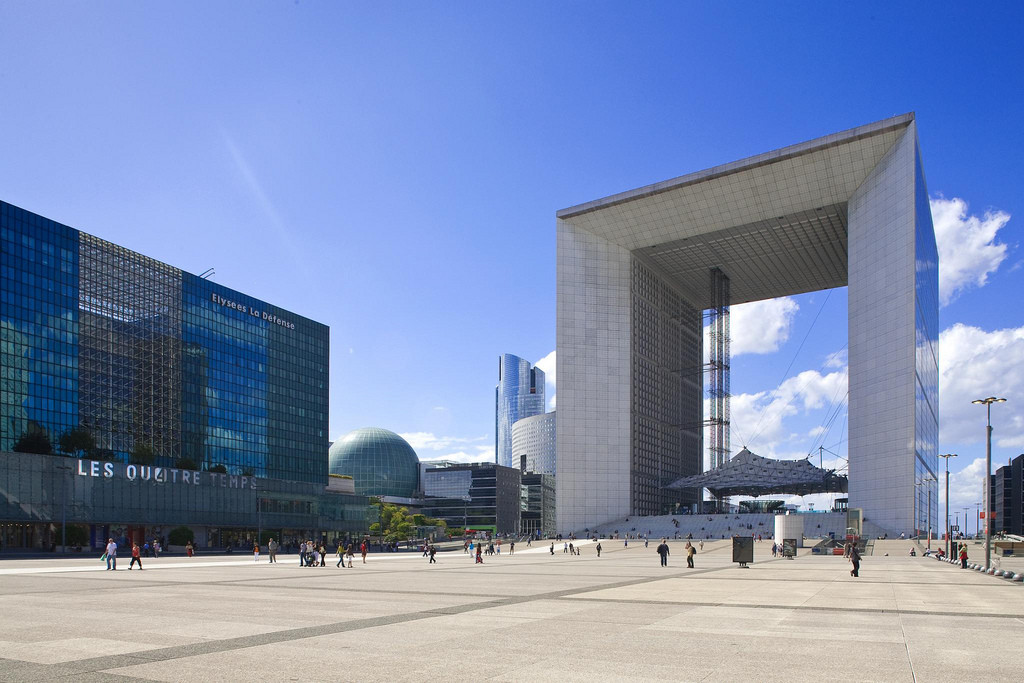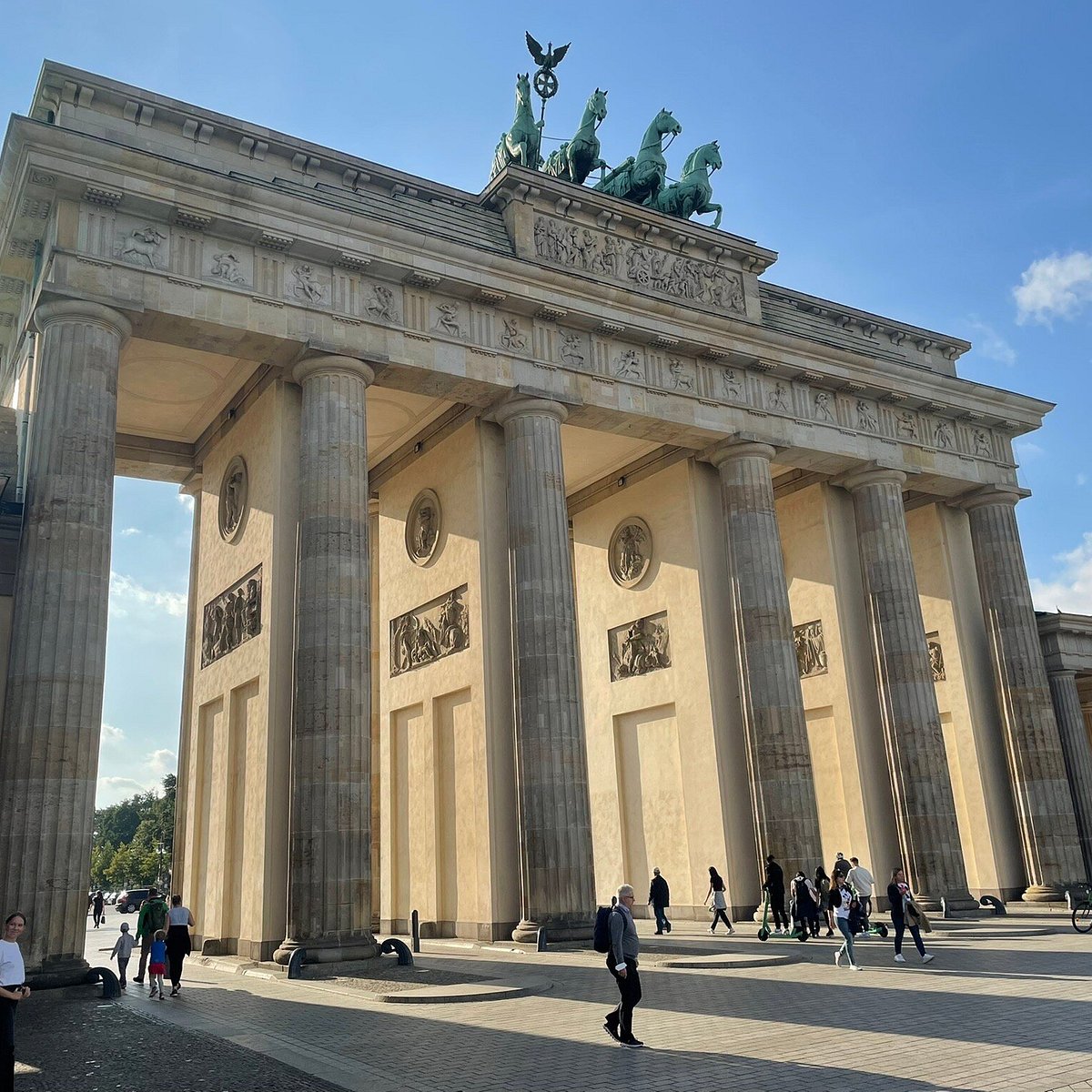Top Lists
Top 10 Stunning Arch Monuments In The World
These arches are stunning examples of landmark architecture, each having a unique tale to tell about how they were created to honor notable individuals or remember significant events.

Let’s take a look at the top 10 Stunning Arch Monuments In The World. Worldwide, arch monuments are popular tourist destinations. These arches are stunning examples of landmark architecture, each having a unique tale to tell about how they were created to honor notable individuals or remember significant events. The globe is home to some very amazing arch structures. In this article, RNN has listed the top 1o Stunning Arch Monuments In The World that you need to know.
Top 10 Stunning Arch Monuments In The World
- Arc de Triomf
- India Gate
- Grande Arche de la Defense
- Brandenburg Gate
- Arch of Constantine
- Arc de Triomphe
- Parthenon
- Gateway Arch
- The Great Pyramid of Giza
- Taj Mahal
10. Arc de Triomf Barcelona, Spain

Top 10 Stunning Arch Monuments In The World
Josep Vilaseca, a Catalan architect, created the Arc de Trio in Barcelona, Spain, in 1888 to serve as the gateway to the World’s Fair. His architectural design was influenced by the Moorish Renaissance. Red bricks were predominantly used in the construction of the arch. The arch’s magnificent stone carvings provide a striking presence. A stone sculpture that reads “Barcelona rep les nations,” which is Catalan for “Barcelona welcomes the Nations,” is perched above the carvings.
9. India Gate

Top 10 Stunning Arch Monuments In The World
One of the most remarkable landmarks in New Delhi is India Gate. The gallant troops who gave their lives fighting for the British in World War I are honored in the “All India War Memorial,” as it is known.
To commemorate those who lost their lives in the conflict, the monument currently serves as a grave for the unknown soldier. In order to honor the troops who lost their lives in the Indo-Pakistan conflict of 1972, it also serves as the location of Amar Jawan Jyoti.
On January 26, 1972, Prime Minister Indira Gandhi inaugurated the Amar Jawan Jyoti. In honor of the noble martyrs who sacrificed their lives during the Indo-Pak War in 1971 for the glory of India, a flame burns continuously under the India Gate day and night. It began in 1921 and was finished in roughly ten years; it was opened on February 12th, 1931. It is now one of New Delhi’s top tourist destinations and is illuminated every evening. Every year on January 26, the India Gate is traversed by the Republic Day procession.
8. Grande Arche de la Defense

Top 10 Stunning Arch Monuments In The World
A monument and structure in the La Défense commercial sector and the commune of Puteaux, west of Paris, France, is known as La Grande Arche de la Défense, also known as La Grande Arche de la Fraternité. It is frequently referred to as La Grande Arche or the Arche de la Défense.
La Grande Arche, a 360-foot (110 m) high cube, was one of François Mitterrand’s grand projects and is seen from the Louvre to the Arc de Triomphe. La Grande Arche and the Arc de Triomphe are separated by a distance of 4 km (2 12 miles).
7. Brandenburg Gate

Top 10 Stunning Arch Monuments In The World
Berlin’s Brandenburg Gate is an 18th-century neoclassical structure that was erected on Frederick William II of Prussia’s instructions after the Orangists were reinstated to power through the suppression of public rebellion in the Netherlands.
It is situated at the intersection of Unter den Linden and Ebertstraße, directly west of Pariser Platz, in Mitte, the western section of Berlin’s city center. The Reichstag building, which houses the German parliament (Bundestag), is located one block to the north. The gate is the grand entrance to Unter den Linden, a street lined with linden trees that connected the Berlin Cathedral with the imperial City Palace of the Prussian emperors.
The Brandenburg Gate has witnessed numerous significant historical occurrences throughout the course of its existence and is now regarded as a symbol of not only the turbulent histories of Germany and Europe but also of peace and togetherness on the continent.
6. Arch of Constantine

Top 10 Stunning Arch Monuments In The World
A triumphal arch in Rome named for the great emperor Constantine is known as the Arch of Constantine. To honor Constantine’s victory against Maxentius at the Battle of Milvian Bridge in AD 312, the Roman Senate ordered the construction of the arch.
The arch crosses the Via Triumphalis, which runs between the Colosseum and the Palatine Hill and was used by triumphant military commanders to enter the city in a triumphal parade.
5. Arc de Triomphe in Paris, France

Top 10 Stunning Arch Monuments In The World
One of Paris, France’s well-known landmarks is the Arc de Triomphe. It was built as a monument to the French Revolution and the troops who died fighting in the Napoleonic Wars. Both the inner and outside portions of the wall were etched with the names of the heroes and triumphs achieved by France during the wars. The unidentified soldier who died in World War I was kept in a crypt underneath the memorial.
To honor the grande armee, Napoleon Bonaparte, a French emperor, had the Arc de Triomphe built in 1806. You shall return home through the Arc of Triumph, Napoleon told the grand armee men in 1805 after the victory at Austerlitz. The project’s first stone was placed on August 15, 1806. However, after Napoleon’s abdication, there were a few breaks in the building, and it wasn’t finished until 1836. The monument rises to a height of 50 meters and has a tourist observation deck at the top.
4. Parthenon

Top 10 Stunning Arch Monuments In The World
In the fifth century BC, the goddess Athena received a temple on the Acropolis of Athens, Greece, known as the Parthenon. A lasting icon of Ancient Greece, democracy, and Western civilization, its ornamental sculptures are regarded as among the pinnacles of classical Greek art.
It is the most significant edifice from Classical Greece still standing. Surprisingly, the Parthenon became a mosque in the early 15th century.
3. Gateway Arch

Top 10 Stunning Arch Monuments In The World
The Gateway Arch, which was created in 1963 and completed in 1965 as a tribute to the United States’ Westward progress, is the highest monument in the country. Eero Saarinen, a Finnish-American, was the architect who created the Gateway Arch. These days, this landmark attracts over 4 million people yearly.
142 different parts of a 12-foot prefabricated steel were used to construct this arch. It has 2357 concrete blocks and 1957 steel.
This landmark includes a unique tram system that takes tourists to the top of the Gateway Arch. A view of 30 miles in every direction is available from its observation platform.
2. The Great Pyramid of Giza

Top 10 Stunning Arch Monuments In The World
The Fourth Dynasty of the Old Kingdom was controlled by the pharaoh Khufu, whose tomb was located inside the Great Pyramid of Giza, the biggest pyramid in Egypt.
The pyramid, the oldest of the Seven Wonders of the Ancient World, was constructed in the early 26th century BC over a period of roughly 27 years. It is also the only wonder that has largely survived. It is the most well-known structure in the Giza pyramid complex, which is a part of the “Memphis and its Necropolis” UNESCO World Heritage Site. It is located at the northernmost point of the Giza triangle formed by the three pyramids.
1. Taj Mahal

Top 10 Stunning Arch Monuments In The World
On the right bank of the Yamuna River in Agra, Uttar Pradesh, India, lies the mausoleum made of ivory-white marble known as the Taj Mahal. The mausoleum of Mumtaz Mahal, the fifth Mughal emperor Shah Jahan’s favorite wife, is housed there, along with Shah Jahan’s own tomb, which was ordered to be built in 1631.
More Articles on RNN
5 Best Historical Places To Visit In Japan
Top 10 Haunted Historical Monuments In India
Top 10 Libraries With State-Of-The Art Architectures And Designs
